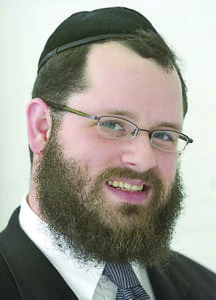 The great Talmudic sage Hillel was born in Babylonia in the first century B.C.E. As a young man, he came to the Holy Land to study Torah at the feet of the sages of Jerusalem. An impoverished, but brilliant, student, he eventually became a famous Torah scholar and the nasi (president) of the Sanhedrin.
The great Talmudic sage Hillel was born in Babylonia in the first century B.C.E. As a young man, he came to the Holy Land to study Torah at the feet of the sages of Jerusalem. An impoverished, but brilliant, student, he eventually became a famous Torah scholar and the nasi (president) of the Sanhedrin.
Hillel is often mentioned together with his colleague, Shammai, with whom he often disagreed on the interpretations of Torah law: Shammai often followed the stricter interpretation, whereas Hillel tended toward a more lenient understanding of the law. In the great majority of cases, his opinion prevailed.
Hillel encouraged his disciples to follow the example of Aaron the High Priest to “love peace and pursue peace, love all G‑d’s creations and bring them close to the Torah.” Hillel was a humble and patient man, and there are many stories that illustrate this.
One famous account in the Talmud (Shabbat 31a) tells about a gentile who wanted to convert to Judaism. This happened not infrequently, and this individual stated that he would accept Judaism only if a rabbi would teach him the entire Torah while he, the prospective convert, stood on one foot. First he went to Shammai, who, insulted by this ridiculous request, threw him out of the house. The man did not give up and went to Hillel. This gentle sage accepted the challenge.
“What is hateful to you, do not do to your neighbor,” Hillel said. “This is the whole Torah; the rest is the commentary; go and learn it.”
Rabbi Akiva (who lived in the second half of the first century and the first half of the second century C.E.) said: “Love your fellow as yourself.
This is what Ahavas Yisrael (love your fellow) is; the rest of the Torah is commentary. As we approach the holiday of Purim, which begins Saturday night, March 11, we celebrate the day with its four special mitzvahs (commandments):
- Hear the Megillah – Head to your synagogue to hear the whole Megillah. The Megillah, a.k.a. The Book of Esther, is the scroll that tells the Purim story. Listen to the public reading twice: once on Purim night, and again on Purim day. This year, that’s Saturday night, March
11 and Sunday day, March 12. Pay attention; it is crucial to hear every word. - Give to the needy (matanot l’evyonim)
One of Purim’s primary themes is Jewish unity. Haman tried to kill us all. We were all in danger together, so we celebrate together too. Hence, on Purim day, we place special emphasis on caring for the less fortunate. Give money or food to at least two needy people during the daylight hours of Purim, March 12. In case you can’t find any needy people, your synagogue will likely be collecting money for this purpose. At least, place two coins in a charity box. - Send food gifts to friends (mishloach manot)
On Purim, we emphasize the importance of friendship and community by sending gifts of food to friends. On Purim day, March 12, send a package containing at least two different ready-to-eat food items and/or beverages (e.g., pastry, fruit, beverage) to at least one Jewish acquaintance during the daylight hours of Purim. - During Purim day, March 12, gather your family, maybe a guest or two, and celebrate with a festive meal. Traditionally, this meal begins before sundown and lasts into the evening.
The table should be bedecked with a nice tablecloth and candles. Wash for bread or challah, and enjoy a meal featuring meat, wine and plenty of Jewish songs, words of Torah and joyous Purim spirit. Sing, drink, laugh, have fun together.
May we take this opportunity to care for one another and may we merit the coming of the Moshiach now! Have a Happy Purim.
(Rabbi Yosef Levy is a Chabad rabbi and the OU Kosher expert and rabbinic field representative for the states of Kentucky and Indiana.)


